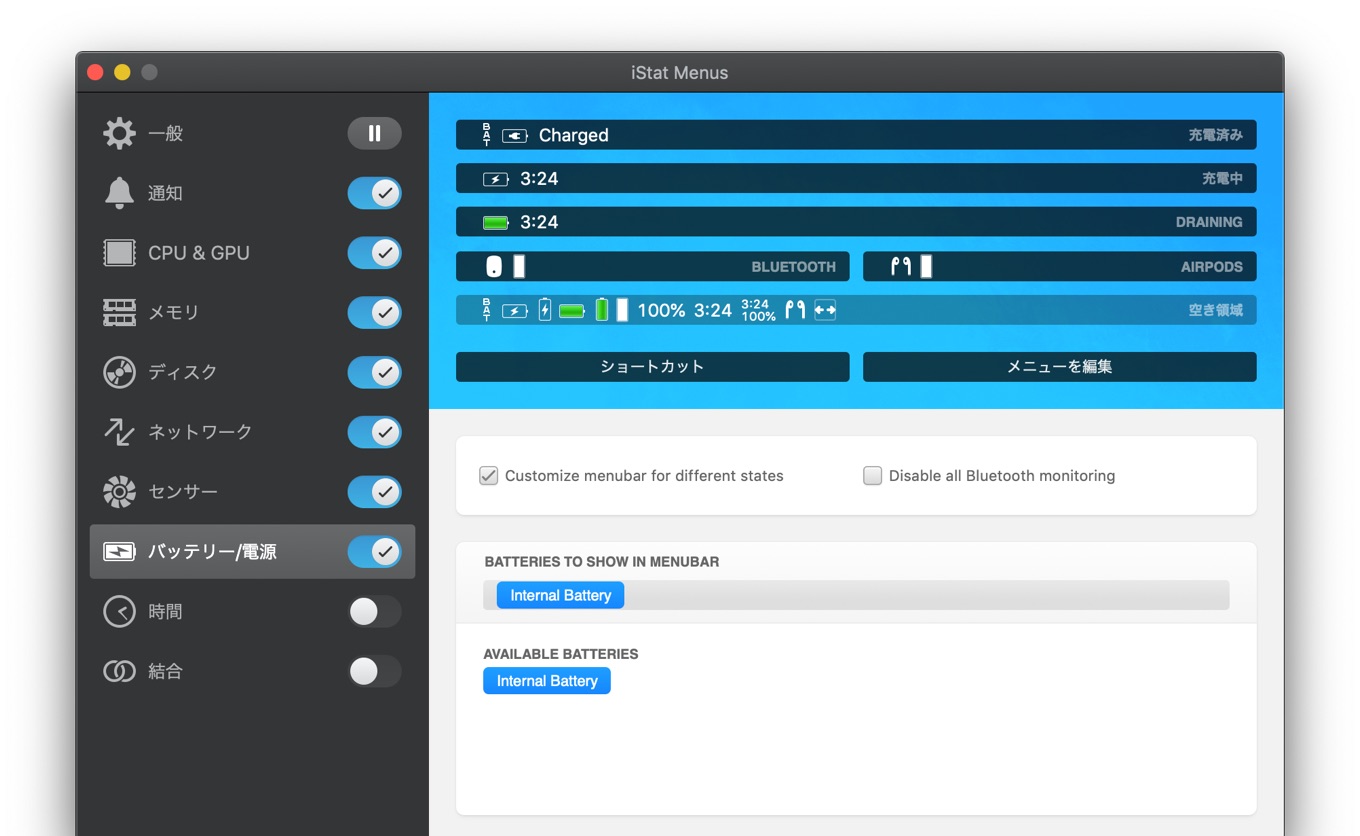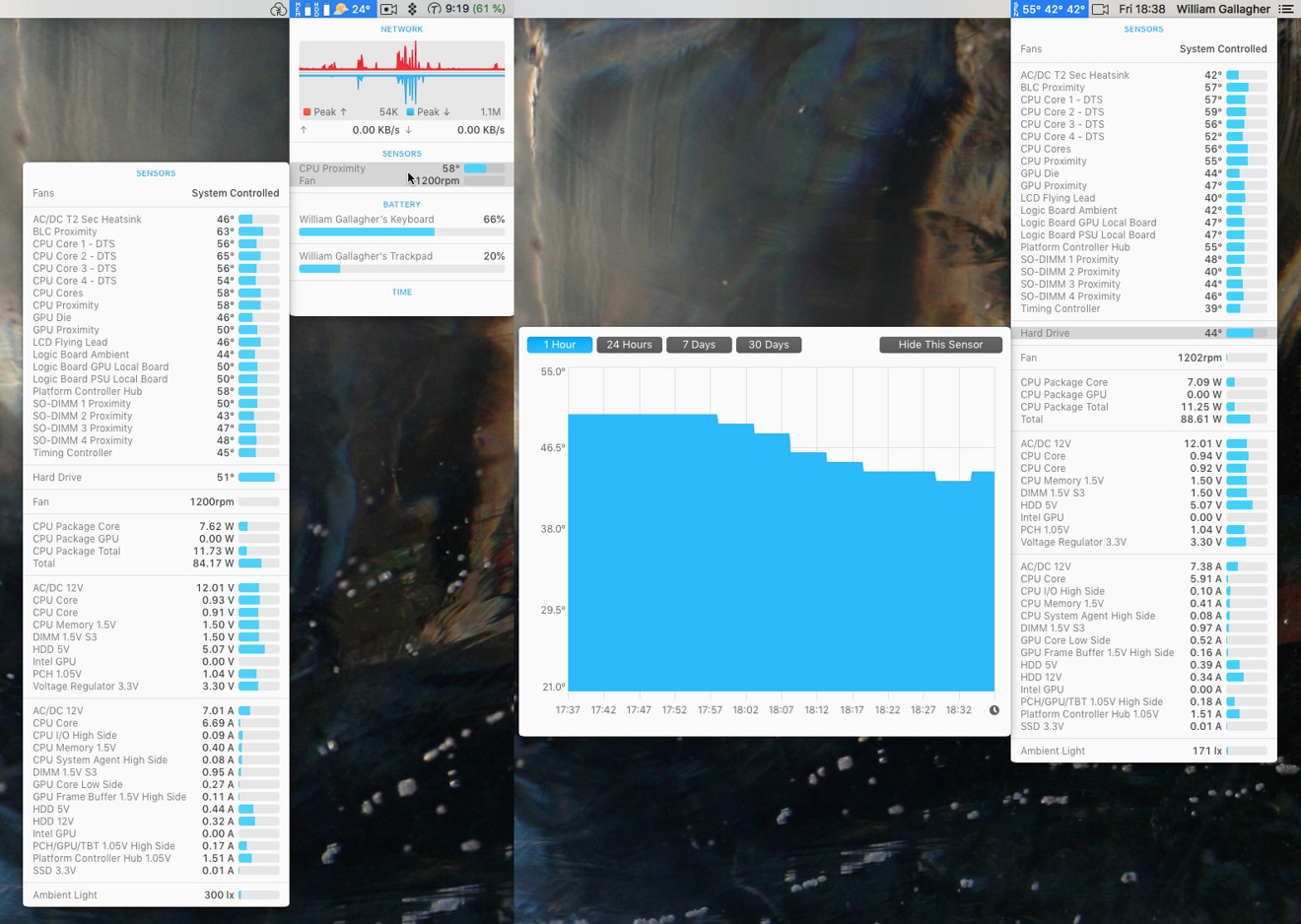Jan 19, 2021 iStat Menus tells me I have comfortably 50% RAM or more in reserve on a daily basis, and that’s while running pretty much every app I use, from Final Cut Pro to Photoshop, Word, Slack, Teams.
- Istat Menus M1 Battery
- Istat Menus M1 2020
- Istat Menus M1 2019
- Istat Menus M10
- Istat Menus Windows
- Istat Menus Apple M1
I won’t beat around the bush – when I first got my hands on the M1 Mac mini, it changed everything.
Having switched from a 16” MacBook Pro to Apple’s latest iteration of their diminutive desktop computer, the lack of any tangible difference in performance has been mind-blowing.
- James Thomson's PCalc calculator app has been among the first to adopt all new Apple technology for decades. The read-it-later app Pocket still needs Rosetta 2, while newsreading app Reeder 5 is.
- I've been using iStat Menus all along for monitoring temperatures but the latest version cannot do this on M1 Mac. So I tried to look for alternatives for my M1 MacBook Air. I found 3 apps and tested them all. TG Pro: This is the only one that provides readable info on temperatures. It organizes temperatures to CPU, GPU, Battery, SSD, etc.
- The 2020 M1 Macbook Air blows the Surface laptop out of the water. Right now, iStat Menus claims I have 19:22 minutes of life remaining. Probably not accurate, but sure feels like it could be true. After all, it doesn't use much power, nor does it generate much heat, when it's using 4 CPU cores to do simplistic tasks like typing and such.
So, if you’re considering buying one yourself either as your main workhorse or as a stop-gap until Apple launches more powerful iterations of their M chips, I think you’ll find my ultimate buying guide pretty useful.
There’ll be no benchmarks or performance tests to wade your way through, either. This guide is designed to help you choose the M1 Mac mini configuration which will most benefit your daily activities.
Initial considerations
Istat Menus M1 Battery
There are a few things to keep in mind before you opt for the M1 Mac mini.
Istat Menus M1 2020
For instance, it often catches people out that the Mac mini doesn’t come with any peripherals. That means you’ll need to buy your own mouse and keyboard, or add Apple’s options to your basket before check-out.
You’ll also need a monitor. For me, that meant I could finally invest in a decent 34” ultra-widescreen monitor, and it was one of the best purchases I made for my studio.
Despite these required additions, though, you’ll be happily surprised to discover just how affordable the M1 Mac mini is compared to an alternative iMac (which, at the time of writing this guide, is yet to receive the M treatment), or MacBook Pro.
Istat Menus M1 2019
There’s some less palatable stuff to keep in mind, though.
At the time of writing, there are widely-reported M1 Mac mini Bluetooth issues. I’ve experienced them myself, and although there is allegedly a macOS fix incoming, the comments on the article below do suggest it could be a little more than a software-based problem.
This may not concern you if you’re willing to bet on it being a bug within macOS, but there are suggestions that it relates more to the Mac mini’s design. Alas, some people don’t experience issues, so it’s certainly not a one-size-fits-all problem.
Lastly, it’s important to highlight that the M1 Mac mini has a relatively limited set of ports. Apple provides an Ethernet port alongside one HDMI, two USB-A and two USB 4 inputs. That’s it. Therefore, if you need more connectivity, you’ll have no choice but to budget for a USB hub, too.
That’s pretty much all you need to keep in mind, though. The good news is that the rest of the choices you need to make are pretty plain sailing.
8GB or 16GB?
Ah, the age-old RAM debate. Only, it’s a satisfyingly different conversation these days.
You see, the M1 chip is rather different to Apple’s Intel-based architecture. Everything important is on that chip, including the RAM, and that has a huge impact on how much RAM you end up using during a normal day’s work.
I opted for the 16GB version because I wanted some headroom for 4K video editing and music production. But in real-world use, according to iStat Menus, my M1 Mac mini rarely if ever uses any more than 50% of the available RAM. Certainly, during everyday ‘normal’ computing tasks such as writing, video calling, spreadsheet work and the like, 8GB is clearly ample.

My advice remains with RAM: buy as much as you can afford. But my advice changes a little if you’re budget-constrained: the M1 chip means you don’t need to sweat it quite as much. If 8GB is the sweet spot, budget-wise, just go for it. Don’t lose sleep over that missing 8GB, because you probably won’t miss it.
How much storage?
This one is on you. It depends entirely on whether or not you prefer to store large files on your device directly.
Arguably, there’s more of an argument to upgrade the storage on a MacBook if you nodded “yes” to the above. When it comes to laptops, the all-in-one approach without the need for an external hard drive is attractive to minimalist creatives. But when you’re more interested in a desktop machine, I think it makes far more sense to go for the base storage option.
This is because external storage is pretty affordable these days and, in some cases, a lot cheaper than Apple’s upgrade prices. So, I’d recommend shopping around for a decent-sized external drive (or two) and making space on your desk for it.
While the M1 Mac mini can be specced up to a massive 2TB of storage, that’s an £800/$800 option which can easily be beaten if you go third-party.
Should you buy AppleCare+?
Let’s get one thing straight: Apple devices last the distance. The last time I needed to take one in for servicing was my 2016 MacBook Pro because of a faulty keyboard – but that was a widespread issue and a huge design flaw.
That’s rare. These things just go, and go, and go. With that in mind, if AppleCare+ at £99/$99 is a little too much to bear, I wouldn’t sweat it.
However, if you can stretch, you’ll add two additional years of warranty to Apple’s standard 12 months. That covers pretty much everything, including accidental damage, and also provides 24/7 access to their fantastic helpdesk team. Therefore, if this is a business purchase and tasked with revenue-generating tasks, it’s absolutely worth the outlay for that extra peace of mind.
Wrap up

The M1 Mac mini is still the most affordable entry point into the macOS ecosystem if you want to buy new and benefit from Apple’s exciting new range of chips.
Istat Menus M10
If you’re unperturbed by the Bluetooth issues (which may well have been fixed by the time you read this), and you have no need for a laptop, the M1 Mac mini ushers in a brand new realm of computing for a much wider audience.

You get oodles of power and headroom for a relatively low investment, and that means a computer which will last you for many, many years to come.
Related buying guides
The Sensors menu extra monitors your temperatures, fans and various power sensors. If you’d like to hide a sensor, you can choose Hide This Sensor from the submenu on every sensor in the sensor dropdown menu.
Fan control #
iStat Menus can control the fans on almost all Macs. Please see our Using Fans page for more information.
Fan issues? #
If you’re having trouble controlling your fans on an Intel Mac, it’s possible you may need to reset your System Management Controller (SMC). For more information, please read Apple’s instructions on resetting your SMC.
Istat Menus Windows
Resetting hidden sensors #
Istat Menus Apple M1
To reset all hidden sensors, choose Reset Sensor Filtering from the Stats menu in iStat Menus.
